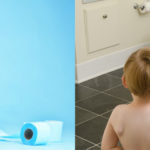Family is the most important influence in a child’s life, but television is not far behind. Television can inform, entertain, and teach us. However, some of what TV teaches may not be the things you want your child to learn. TV programs and commercials often show violence, alcohol or drug use, and sexual content that may not be suitable for children or teens.
Studies show that TV viewing may lead to more aggressive behavior and less physical activity. By knowing how television affects your children and by setting limits, you can help make your child’s TV-watching experience not only enjoyable, but healthy too.
How TV affects your child
There are many ways that television affects your child’s life. When your child sits down to watch TV, consider the following:
Time
Children in the United States watch about 4 hours of TV every day. Watching movies on tape and playing video games only adds to time spent in front of the TV screen. It may be tempting to use television, movies, and video games to keep your child busy, but your child needs to spend as much time growing and learning as possible. Playing, reading, and spending time with friends and family are much healthier than sitting in front of a TV screen.
Nutrition
Children who watch too much television are are more likely to be overweight. They do not spend as much time running, jumping, and getting the exercise they need. They also see many commercials for unhealthy foods, such as candy, snacks, sugary cereals, and drinks during children’s programs. Commercials almost never give information about the foods children should eat to keep healthy.
Violence
If your child watches 3 to 4 hours of noneducational TV per day, he will have seen about 8,000 murders on TV by the time he finishes grade school. Children who see violence on television may not understand that real violence hurts and kills people. Even if the “good guys” use violence, children may learn that it is okay to use force to handle aggression and settle disagreements. It is best not to let your child watch violent programs and cartoons.
Sex
Television exposes children to adult behaviors, like sex. But it usually does not show the risks and results of early sexual activity. On TV, sexual activity is shown as normal, fun, exciting, and without any risks. Your child may copy what she sees on TV in order to feel more grown up.
Alcohol, tobacco, and other drugs
Young people today are surrounded by messages that say drinking alcohol and smoking cigarettes or cigars are normal activities. These messages don’t say that alcohol and tobacco harm people and may lead to death. Beer and wine are some of the most advertised products on television. TV programs and commercials often show people who drink and smoke as healthy, energetic, sexy, and successful. It is up to you to teach your child the truth about the dangers of alcohol, tobacco, and other drugs.
Commercials
The average child sees more than 20,000 commercials each year. Commercials are quick, fast-paced, and entertaining. After seeing the same commercials over and over, your child can easily remember a song, slogan, or catchy phrase. Ads may try to convince your child that having a certain toy or eating a certain food will make him happy or popular. Older children can begin to understand how ads use pictures, music, and sound to entertain. Kids need to know that ads try to convince people to buy things they may not need.
Learning
Television affects how your child learns. High-quality, nonviolent children’s shows can have a positive effect on learning. Studies show that preschool children who watch educational TV programs do better on reading and math tests than children who do not watch those programs. When used carefully, television can be a positive tool to help your child learn.
A word about…TV for toddlers
Children of all ages are constantly learning new things. The first 2 years of life are especially important in the growth and development of your child’s brain. During this time, children need good, positive interaction with other children and adults. Too much television can negatively affect early brain development. This is especially true at younger ages, when learning to talk and play with others is so important.
Until more research is done about the effects of TV on very young children, the American Academy of Pediatrics (AAP) does not recommend television for children age 2 or younger. For older children, the Academy recommends no more than 1 to 2 hours per day of educational, nonviolent programs.
10 things parents can do
As a parent, there are many ways you can help your child develop positive viewing habits. The following tips may help:
- Set limitsLimit your child’s use of TV, movies, and video and computer games to no more than 1 or 2 hours per day. Do not let your child watch TV while doing homework.
- Plan your child’s viewingInstead of flipping through channels, use a program guide and the TV ratings to help you and your child choose shows. Turn the TV on to watch the program you chose and turn it off when the program is over.
- Watch TV with your childWhenever possible, watch TV with your child and talk about what you see. If your child is very young, she may not be able to tell the difference between a show, a commercial, a cartoon, or real life. Explain that characters on TV are make-believe and not real. Some “reality-based” programs may appear to be “real,” but most of these shows focus on stories that will attract as many viewers as possible. Often these are stories about tragedy and violence. Much of their content is not appropriate for children. Young children may worry that what they see could happen to them or their family. News broadcasts also contain violent or inappropriate material. If your schedule prevents you from watching TV with your child, talk to her later about what she watched. Better yet, videotape the programs so that you can watch them with your child at a later time.
- Find the right messageEven a poor program can turn out to be a learning experience if you help your child find the right message. Some television programs may portray people as stereotypes. Talk with your child about the real-life roles of women, the elderly, and people of other races that may not be shown on television. Discuss ways that people are different and ways that we are the same. Help your child learn tolerance for others. Remember, if you don’t agree with certain subject matter, you can either turn off the TV or explain why you object.
- Help your child resist commercialsDon’t expect your child to be able to resist ads for toys, candy, snacks, cereal, drinks, or new TV programs without your help. When your child asks for products advertised on TV, explain that the purpose of commercials is to make people want things they may not need. Limit the number of commercials your child sees by watching public television stations (PBS). You can also tape programs and leave out the commercials or buy or rent children’s videos.
- Look for quality children’s videosThere are many quality videos available for children that you can buy or rent. If you have questions about children’s videos or just want some suggestions, contact The Coalition for Quality Children’s Media at 505/989-8076 or visit their Web site at http://www.cqcm.org.
- Give other optionsWatching TV can become a habit for your child. Help your child find other things to do with his time, such as the following:
- Playing
- Reading
- Activities with family, friends, or neighbors
- Learning a hobby, sport, instrument, or an art
- Set a good exampleYou are the most important role model in your child’s life. Limiting your own TV viewing and choosing programs carefully will help your child do the same.
- Express your viewsWhen you like or don’t like something you see on television, make yourself heard. Write to the TV station, network, or the program’s sponsor. Stations, networks, and sponsors pay attention to letters from the public. If you think a commercial is misleading, write down the product name, channel, and time you saw the commercial and describe your concerns. Call your local Better Business Bureau, or send the information to:
Children’s Advertising Review Unit
Council of Better Business Bureau
845 Third Ave
New York, NY 10022Encourage publishers of TV guides to print ratings and feature articles about shows that are educational for children.
- Get more informationThe following people and places can provide you with more information about the proper role of TV in your child’s life:
- Your pediatrician may have information about TV or can help you get it through the American Academy of Pediatrics. Ask for the AAP brochure Understanding the Impact of Media on Children and Teens
- Public service groups publish newsletters that review programs and give tips on how to make TV a positive experience for you and your child. Check with your pediatrician.
- Your local Parent/Teacher Association (PTA).
- Parents of your child’s friends and classmates can also be helpful. Talk with other parents and agree to enforce similar rules about TV viewing.
The Children’s Television Act of 1990
The Children’s Television Act ensures that TV stations pay attention to the needs of children from age 2 to 16. Under this law, stations must air at least 3 hours of educational and informational shows for children each week. They must also limit advertising during children’s shows to 12 minutes per hour on weekdays and 10.5 minutes per hour on weekends.
TV stations that do not follow the law risk losing their licenses. The Federal Communications Commission (FCC) makes sure stations obey the law. For the law to be even more effective, keep tabs on TV stations in your community and report any violations to the FCC. If a station does not appear to be complying with the Children’s Television Act, inform the FCC by sending a written complaint to:
Mass Media Bureau
Federal Communications Commission
445 12th Street SW
Washington, DC 20554
TV Parental Guidelines and the V-Chip
In 1996, Congress passed a law that gives parents the ability to control what their children watch on television. The law set up a rating system called the TV Parental Guidelines. The ratings can help parents avoid programs that contain sex and violence. By using a computer device called the v-chip, parents can block these programs from their televisions. Since the year 2000, all new television sets with screens 13 inches or larger have the v-chip.
The ratings apply to all TV programs except news and sports. They can sometimes be found in your local TV listings and appear for 15 seconds at the start of a program. The ratings are as follows:
| TV-Y | For all children |
| TV-Y7 | For children age 7 and older. The program may contain mild violence that could frighten children under age 7. |
| TV-Y7-FV | For children age 7 and older. The program contains fantasy violence that is glorified and used as an acceptable, effective way to solve a problem. It is more intense than TV-Y7. |
| TV-G | For general audience. Most parents would find this program suitable for all ages. There is little or no violence, no strong language, and little or no sexual content. |
| TV-PG | Parental guidance is suggested. Parents may find some material unsuitable for younger children. It may contain moderate violence, some sexual content, or strong language. |
| TV-14 | Parents are strongly cautioned. The program contains some material that many parents would find unsuitable for children under age 14. It contains intense violence, sexual content, or strong language. |
| TV-MA | For mature audience. The program may not be suitable for children under age 17. It contains graphic violence, explicit sexual activity, or crude language. |
This ratings system was created to help parents choose programs that are suitable for children, even without the use of the v-chip. Before watching, check your local TV listings to find out if a program contains violence, sexual content, or strong language. Remember that ratings are not used for news programs, which may show content that is not suitable for young children.
Also, TVs with screens smaller than 13 inches will not have the v-chip. So, if your child is allowed to watch TV alone, choose a set that is at least 13 inches so you can use the v-chip to block programs. Avoid putting a television in your child’s bedroom.
When used properly, television can inform, educate, and entertain you and your family. By taking an active role in your child’s viewing, you can help make watching TV a positive and healthy experience.
This information should not be used as a substitute for the medical care and advice of your pediatrician. There may be variations in treatment that your pediatrician may recommend based on the individual facts and circumstances.
© COPYRIGHT AMERICAN ACADEMY OF PEDIATRICS, ALL RIGHTS RESERVED. American Academy of Pediatrics, 141 Northwest Point Blvd., Elk Grove Village, IL, 60007, 847-434-4000






